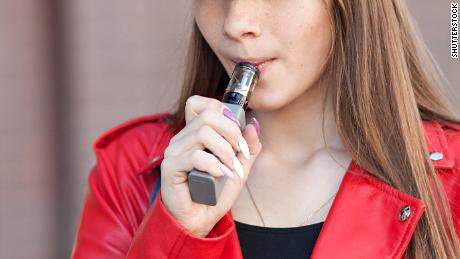In the wake of six deaths and
380 cases of confirmed and probable lung disease across the US, the Trump administration has called for
banning most flavored e-cigarettes because of their huge appeal to young people.
The Centers for Disease Control and Prevention is
looking closely at the different flavored nicotine juices and other substances users may be vaping in e-cigarettes to determine how the aerosol might be affecting users’ lungs.
On Sept. 12, 2019, the CDC lowered the number of confirmed and probable cases from more than 400 to 380. The number was lower, the agency said, because it is no longer reporting “possible cases.”
The mystery and concern remain. And, many smokers who use these devices to quit are concerned that a valuable tool may be taken away from them.
There’s much more that researchers need to know. These devices have a short history. As an engineer who studies how people use tobacco products, I believe that users’ behavior is key to understanding the positive and negative health effects resulting from e-cigarettes. After all, their intent was to help people stop smoking, the number one cause of preventable death in the U.S.
The way users puff, how long they puff and what they puff all play a role. We do not yet know how this behavior affects how much of each substance vapers consume over the course of their daily lives, but we have reason to believe it is significant.
The failed promise of alternative nicotine products
Many are skeptical that e-cigarettes will reduce death rates related to smoking. Historically safer cigarettes have not delivered on a similar promise. After the U.S. surgeon general
declared smoking harmful in 1964, smokers who could not quit migrated to what were then considered
low-yield cigarettes, marketed as safer and having less tar than regular cigarettes.
But the wide use of low-yield cigarettes did not lower death rates for smokers. Cases of squamous cell lung cancer did decrease after the surgeon general’s warning, but another type,
adenocarcinoma, increased.
Engineering models suggest that changes in smoke characteristics combined with smokers’ compensating behaviors
changed where the particles deposited in the lung played a role. Smokers may have consumed more smoke to maintain their addiction. Different cancer types originate in different lung locations. The thought is that smokers changed their behavior, and in doing so, may have traded one type of cancer for another.
How did we miss this?
Traditionally, cigarettes were tested in a laboratory, using smoking machines — not a smoker —
using an industry standard protocol established in 1966.
Research later revealed that this “mechanized smoking”
does not represent realistic behavior and so did not represent realistic exposure to harmful constituents. The former standard
(FTC/ISO puffing protocol) was repealed in 2008, with the hope that a new, more realistic standard would take its place.
Now, thanks to a
law passed in 2009, tobacco product manufacturers cannot claim reduced risk without scientific evidence. Researchers like me are applying lessons learned from the low-tar debacle and generating scientific evidence to understand the true health impact of e-cigarettes.


